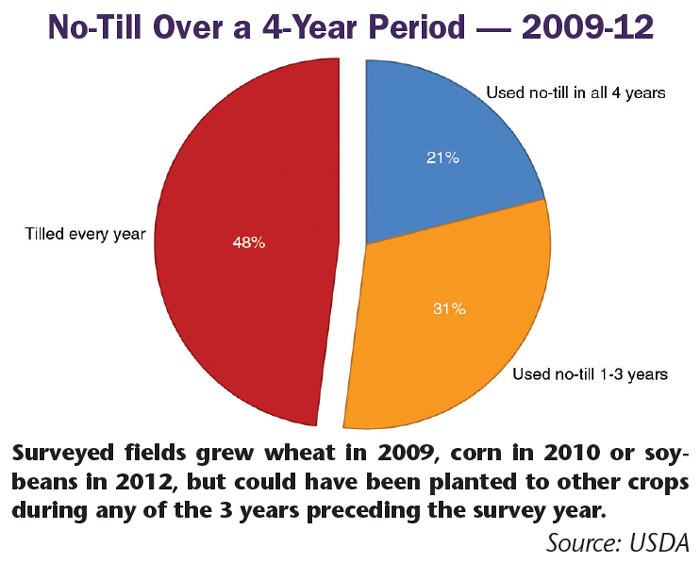Dealers looking for growing niche markets that could offer potential for sales growth should keep an eye on changing field practices that promote soil health and stress conservation. According to USDA’s Economic Research Service and National Agricultural Statistics Service, as the emphasis on the environment takes shape, in all likelihood, farmers will consider altering field practices to adapt, especially if they see economic benefit.
While no conservation practice has been universally adopted by U.S. farmers, some practices are catching on more than others. The Agricultural Resource Management Survey’s (ARMS) Farm Financial and Crop Production Practices report maintains, “the environmental effects of agricultural production, e.g., soil erosion and the loss of sediment, nutrients and pesticides to water, can be mitigated using conservation practices.”
The adoption of conservation practices vary, in large part, due to variation in soil, climate, topography, crop/livestock mix, producer management skills and financial risk aversion. “These factors affect the on-farm cost and benefit of practice adoption. Presumably, farmers will adopt conservation practices only when the benefits exceed cost.”
That same ARMS report indicates that the most-often adopted conservation practice is no-till. It goes on to note that soil health improves when farmers refrain from disturbing the soil. “While no-till production systems are increasingly used on land in corn, soybeans and wheat they are not necessarily used every year.”
Field-level data, collected through the ARMS study show that farmers often rotate no-till with other tillage systems. Farmers growing wheat (in 2009), corn (in 2010) and soybeans (in 2012) were asked about no-till use in the survey year and the 3 previous years. No-till was used continuously over the 4-year period on 21% of surveyed acres.
Because tilling the soil can help control weeds and pests, some farmers rotate tillage practices much like they rotate crops.







